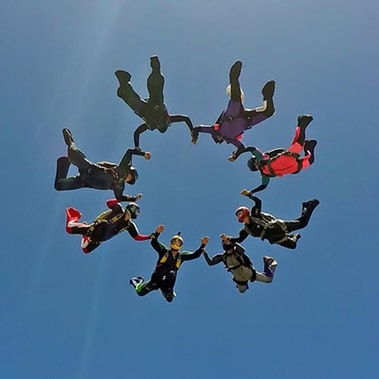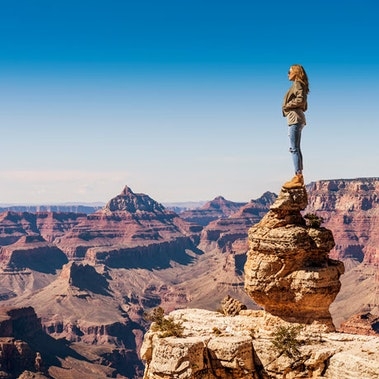This was first published on May 26, 2020.
One silver lining of the COVID-19 pandemic is the way in which organizations have rapidly introduced new ways of working. Necessity has accelerated the adoption of digital tools, which when used thoughtfully, improve productivity and performance.
Initially, the focus was on getting by, using technology to support critical business-as-usual activity. Transformation programs and complex change agendas were put on hold to reduce risk. Now, remote working is the ‘new normal’. Billions of people have proven it is possible to work effectively from home, making a full return to the office unnecessary and unlikely for months to come. Remote working has also led to many benefits which organizations will want to retain long after the pandemic, such as reduced travel costs, flexibility, and a level playing field for global workforces.
Now, as leaders look to the future, it is time to take remote collaboration to the next level. The question is: How can organizations unlock the potential of their people to drive complex change using remote co-creation?
Watch: Co-creation leads to impact, even remotely
Believe Anything Is Possible
Co-creation involves people working together simultaneously toward shared outputs and outcomes. It is proven to generate ownership and commitment, de-risking implementation, and accelerating results. We call this approach people-led change.
People-led change is equally powerful remotely. Highly structured agendas, holistic, thoughtful facilitation, and a carefully architected virtual environment create the conditions to engage the right people in the right conversations to quickly achieve tangible results
Remote co-creation can be used to engage boards and senior management in answering the complex questions currently being asked at the top of organizations. Recently, one of our clients, a multinational technology company, faced challenging market conditions and pressure on operating costs following a number of complex acquisitions. Through a 20-hour virtual design event over four days, we helped 25 of their senior leaders design a new fit-for-purpose operating model for their operations. Not only did they develop a detailed target operating model that they owned and were committed to implementing, but through the experience they aligned behind a common goal, built greater trust in each other, and established new ways of working together as a team. All of this was achieved remotely.
Co-creation can be embedded in programs to accelerate and de-risk delivery. It is also a powerful approach to engaging audiences en masse. For instance, we are currently supporting Marsh & McLennan Companies to bring together 2500 global leaders (representing hundreds of Fortune 500 companies) for 72-hours around-the-clock. The goal is to address how we will work and live in the years ahead, and ultimately define a shared vision for humanity in a post COVID-19 world.
Through the lockdown period, we have shown that solving complex, political problems with large groups of people is possible remotely, but how can organizations take this further to enrich the human experience?
Create An Engaging, Human Experience
Since lockdown began, so too did video-conferencing fatigue. Spending large parts of your day on video calls is draining. It takes effort to coordinate turn-taking when the natural cues in human communication are disrupted by the slightest lag. Even the simplest forms of collaboration require greater thought and preparation to be done well online. As a result, many people find themselves back-to-back in monotonous, mediocre meetings, with little time left to produce work.
Although leaders are instinctively wary that participants will quickly disengage if they bring large groups together for more than a few hours at a time, there are ways to create an energizing and engaging remote experience. Here, human-centered design is key.
This involves taking time to empathize with the different motivations, personalities, and communication styles of participants and tailor sessions accordingly. The building blocks of online co-creation include individual input, sprints in parallel teams, and facilitated group discussions. These elements can be designed and combined in creative ways. Using movement, sound, impactful visuals, and intentionally designed interactivity creates an engaging, multi-sensory experience. In a remote world, it is also more important than ever to create space for genuine human connection. Moments of openness, humor, and fun build trust, create connection, and ultimately help people perform as a team.
Recently, we put all this into practice with more than 35 senior leaders from a UK fintech and the private equity firm that had recently acquired it. The two-and-a-half-day online experience was purposefully designed with a cadence and intensity that kept participants engaged and energized. Through the series of sessions, the group established a shared ambition for the company’s full potential and built confidence in delivering on that ambition through a suite of ideas that senior management had co-created.
Experience aside, shared purpose and the opportunity to participate in solving real business problems will drive engagement and productivity for employees. In the example above, 94 percent of participants came away from the experience strongly agreeing they felt excited about reaching their full potential. Meaningful participation is what translates purpose into action.
Making It Happen
Facilitating a process by which large groups collaboratively define, design, and achieve shared outcomes is not easy. The following three ingredients can help business leaders put this into practice: purposeful design, a connected environment, and the power of people.
Purposeful design: Start with the end in mind. From the outset, remote working sessions must be guided by relentless focus on desired outputs and outcomes from senior sponsors. From there, we design a process that brings together the right people with the right information at the right times to achieve those results. Rigorous preparation and practice with key participants ensure the process runs to plan whilst creating the ability to adapt as needed.
A connected environment: Remote co-creation requires seamless connection to shared virtual workspaces and tools. A video conferencing platform with breakout functionality is just the foundation. With supplementary tools, it’s possible for people to explore insights, crowd-source ideas, co-design, make informed decisions, monitor progress, and coordinate work. A wide range of fit-for-purpose applications already exists that can be connected into a single, secure user experience.
The power of people: Like any live performance, it takes a dedicated team behind the scenes to deliver a productive, engaging experience. A multi-disciplinary team with design, facilitation, creative, and digital expertise can help manage the process and environment, allowing participants to dedicate their full focus to the work at hand. It is also extremely important to invest time and effort in equipping and empowering people to adopt new ways of working. In this new normal, everyone from the facilitation team to senior executives must embrace new tools and techniques in order to fully contribute.
Final Thoughts
Remote co-creation has the ability to unlock the expertise, passion, and talent of people. In our continually evolving digital environment, we are all learning new things every day. Creating a safe space to test new ways of working together will lead to discoveries that extend far beyond responding to the current crisis.
Our experience in recent months has proven it possible to bring together diverse groups of people from around the world remotely to solve complex business challenges. Now, as leaders rethink the future, it is time for organizations to take remote collaboration to the next level. We’ve seen many examples of how firms have used remote co-creation to unlock the potential of their people and drive change. As companies emerge from lockdown, these valuable lessons and new ways of working will increase productivity and engagement, no matter which challenges they face.



About 8works
8works is a specialist division of Oliver Wyman, a core part of our Organizational Effectiveness practice. Their mission is to ignite the insight, conviction, and ability to succeed by blending expert knowledge with co-creation. 8works designs and activates change by bringing together diverse groups of leaders and teams in pursuit of shared outcomes, unlocking the expertise, passion, and talent within our client’s teams. We call this people-led change.





